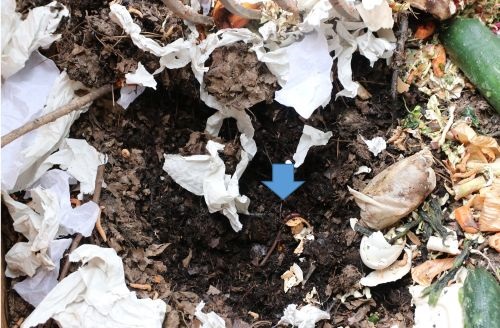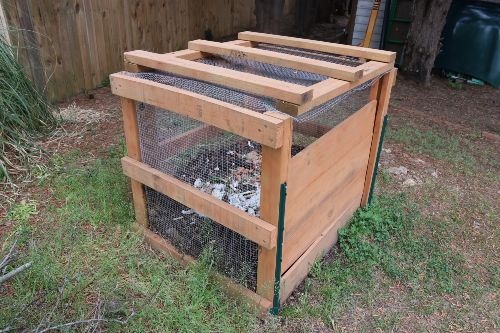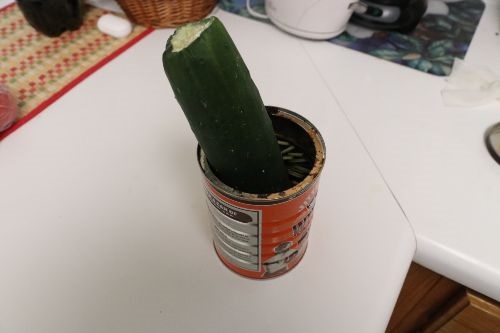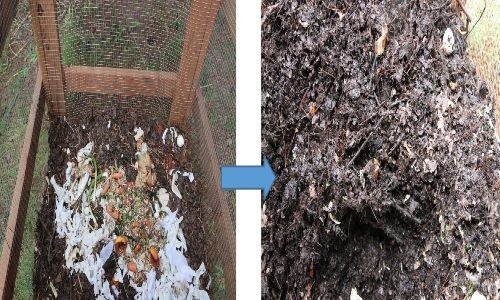Did you know that food scraps and yard waste together make up 30% of what we throw away? [1]
UGA SNAP-Ed has existing blogs on Eating for a Healthy Earth and Five Quick Tips on How to Revive Your Wilting Produce that provide some great information on how to save your food. If you still have some food waste, composting may be your answer! Keep reading to find out how you can transform your kitchen scraps into nutritious material for you and the Earth.
What is compost?
Compost is nutrient-rich soil that is made from breaking down organic materials. It decreases the amount of waste that ends up in the trash. Living things like bacteria, fungi, and worms work together to break down scraps into nutritious soil that can be used for gardening.

There are four main ingredients for compost:
- Browns – Examples include:
- Shredded newspaper
- Clean paper towels
- Cardboard
- Hay and straw
- Woodchips
- Twigs
- Greens – Examples include:
- Fruit and vegetables
- Eggshells
- Coffee grounds and filters
- Tea leaves
- Grass clippings
- Houseplant trimmings
- Hair and fur
- Water – Most living things need moisture to live. The right amount of water can help your compost break down easier.
- Air – Turning your compost, or mixing it, can help your materials break down easier.
There are some materials you don’t want in your compost because they take a long time to break down, can cause harm to other plants, and can attract unwanted pests:
- Coal or charcoal ash
- Dairy products
- Meat or fish products
- Pet waste
- Yard trimmings with pesticides
- Diseased or insect-ridden plants [1]
How do I compost?

There are many types of bins people use to collect compost. Read this list of ideas [2] to find one that works for you.

If you don’t have a compost bin, try composting indoors. Use a bucket or bin with a lid to keep out odors. Some hardware or garden supply stores sell special indoor composting bins. You could also use old coffee canisters and jars to collect compost. Whatever works for you!

Now, you can start adding scraps to the bin! An easy method of adding scraps is to alternate between adding a layer of browns and a layer of greens. It’s also important to have a good balance of brown and green materials. A general rule of thumb: for every one handful of green material, add two handfuls of brown material.
It’s important to mix the compost once or twice a month to give it air. Since the green material is wet, you usually do not need to add water, but you can water your pile if it is very dry and takes more than a month to break down.
The temperature of the compost pile is another thing to consider. Warmer temperatures will help speed up the decomposition process while cooler temperatures will slow it down. If your compost pile is well-mixed and working properly, the pile should heat up to the temperature range of 110-160 degrees Fahrenheit. These high temperatures will help protect against weeds and disease in the pile. Read about this important requirement of a compost pile and more about composting in this UGA Extension publication. [3]
If you have scraps but do not have a compost bin, consider giving them to a local compost service or community garden. Reach out to your local Extension office for compost drop-off locations.
How do I use compost?
There are a few ways to use the compost once it is made. Drop off compost to a community garden or other organizations looking for contributions to commercial compost piles. Add broken-down compost to your garden beds or yard to add nutrients for happy plants. If you have been growing herbs, green onions, microgreens, and other kitchen scraps inside and want to move them to the soil, use your homemade compost to support their growth!
Happy composting!
Written by Theavy Tep, B.S.F.C.S. in Dietetics | Edited by: Leslie Davis, MS, RDN, LD, CDCES and the Nutrition Education Team
Posted: May 14, 2021
[1] U.S. Environmental Protection Agency
Original photo sources:
- Worm in compost: Theavy Tep
- Yard compost bin: Theavy Tep
- Indoor compost: Theavy Tep
- Fresh scraps in compost: Theavy Tep
- Completed compost: Theavy Tep